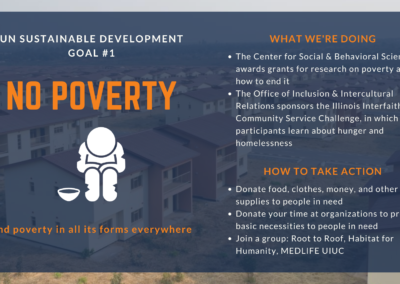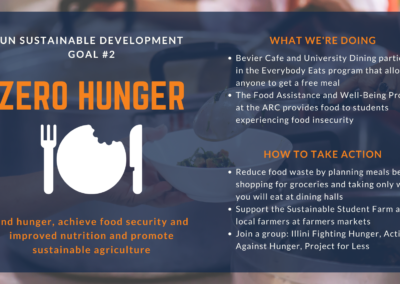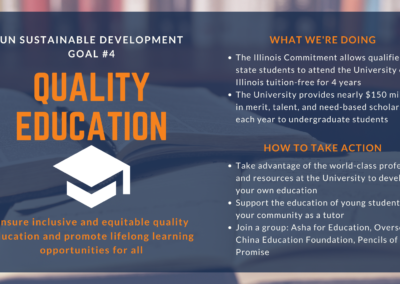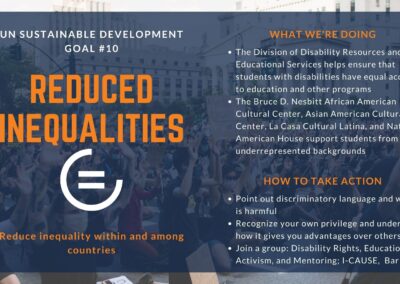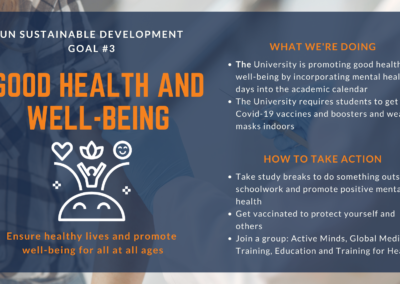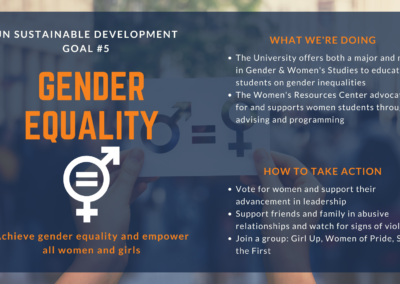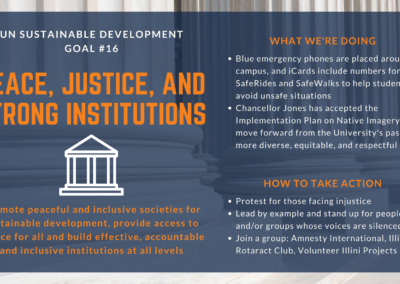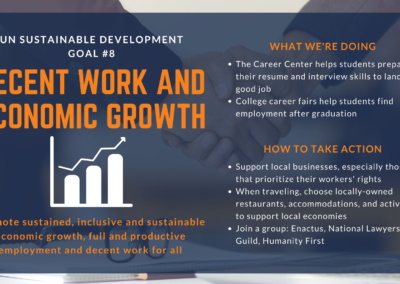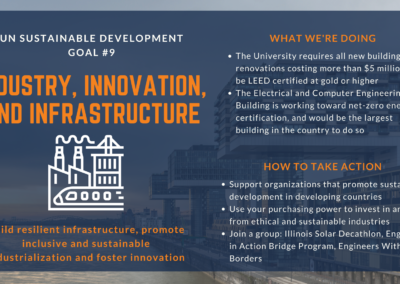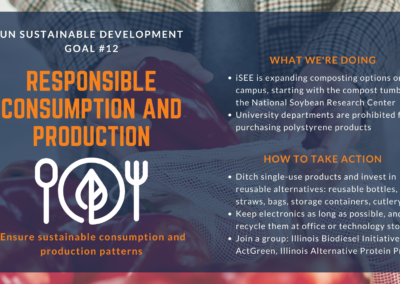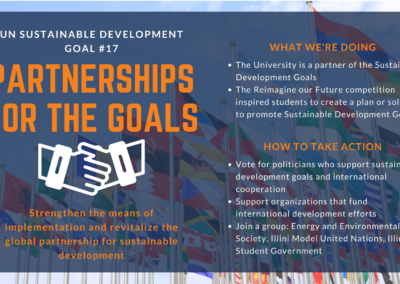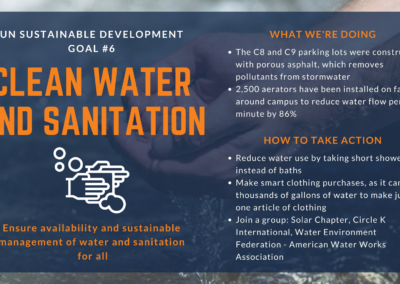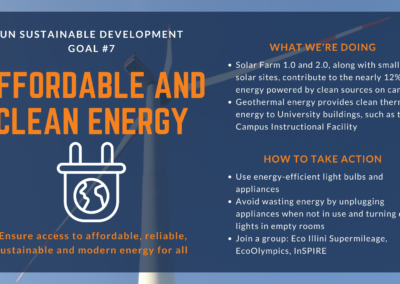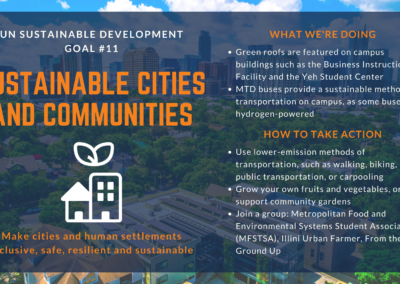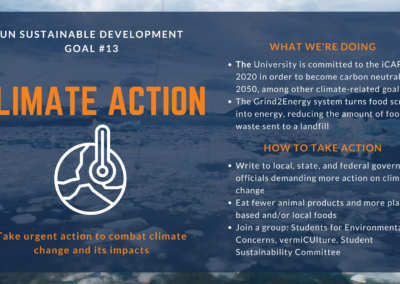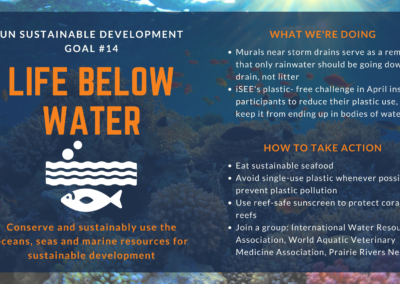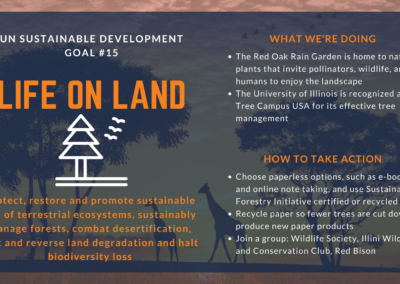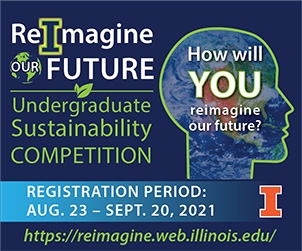 The University of Illinois Urbana-Champaign has been at the forefront of defining what sustainability means and what is needed to ensure a healthy future for life on Earth. Several University of Illinois professors recently co-founded a sustainable development competition that asked students to explore their vision for a sustainable future.
The University of Illinois Urbana-Champaign has been at the forefront of defining what sustainability means and what is needed to ensure a healthy future for life on Earth. Several University of Illinois professors recently co-founded a sustainable development competition that asked students to explore their vision for a sustainable future.
Their answers covered everything from gender-equity education to sustainable cement.
The 2021 “Reimagine Our Future” contest was organized by Leon Liebenberg, Professor of Mechanical Science and Engineering; Warren Lavey, Professor of Environmental Law; Robert McKim, Professor Emeritus of Religion; and Michelle Wander, Professor of Natural Resources & Environmental Sciences. The team was ably supported by undergraduate assistants Peter Davis and Shreyas Venkatarathinam.
The competition is focused on the United Nations Sustainable Development Goals (SDGs), adopted in 2015. The U.N. contends that the goal of ending poverty and other deprivations must go hand-in-hand with strategies that improve health and education and spur economic growth — all while tackling climate change and working to preserve our oceans, forests, and life on Earth as a whole.
The founders, specialist advisors, judges, and supporters of the Reimagine Our Future contest believe that universities have a profound responsibility to promote sustainable development and saw this competition as a way to encourage and reward creative and innovative student proposals about how to do that.
The pilot competition in fall 2021 drew undergraduate students from many disciplines. Participants were asked to develop an original proposal that addressed one or more of the 17 U.N. sustainable development goals. After deciding on a topic and, in some cases, forming a team, the students formally entered the contest and were connected with a specialist advisor.
The sustainable development goals address many aspects of what it would take to create a sustainable society, from fighting climate change and biodiversity loss to reducing social inequities and protecting the universal right to decent education and employment (full list in gallery below). They fully encompass what is meant by living sustainably, going beyond crucial environmental issues, and recognize that a society is not sustainable if certain groups are deprived of the benefits of development.
Using this as a foundation, students sought to think out new initiatives that would have a positive effect on human development as well as on the environment. Submissions came from a wide range of fields, such as engineering, health sciences, social sciences, earth sciences, design, and architecture, illustrating the interdisciplinary nature of the efforts needed to achieve the U.N. sustainable development goals.
“The competition stretched students’ imagination to the limits, and they also had to interpret the scalability and overall feasibility of their ideas.” Liebenberg said.
Engineering students Jamie Lee and Semi Shin took first place, capturing the $2,000 grand prize. This team presented a communication strategy for promoting the use of Sustainable Cement. Rather than introducing a new technology, the students focused on greater implementation of one that already exists. They pointed out that cement production accounts for 8% of total carbon emissions, a clear area for improvement in terms of sustainability.
The team recommended adoption of a product called LC3, a variation of conventional Portland cement. LC3 uses less of a primary ingredient known as “clinker,” which is responsible for most carbon emissions in cement production. Replacing clinker — a combination of limestone and other minerals that must be heated to high temperatures — with calcinated clay reduces its carbon content. With no new technology required, this simple change in production can achieve a 40% reduction in carbon emissions related to cement. The team highlighted the contribution of sustainable cement to the industry, innovation, and infrastructure goal (SDG #9), responsible consumption and production (SDG #12), and partnerships for the goals (SDG #17).
As developing nations seek to urbanize and developed nations strive to advance further, the demand for cement will only grow. Lee said that LC3 has been tested in developing countries, such as small-scale home projects.
“Introducing the potential for sustainable cement in developing countries could perhaps steer them toward a more environmentally aware process of urbanizing while enabling them to effectively/efficiently develop their infrastructure,” Lee said.
Although the judges were impressed by the scope of each team’s proposals, the Sustainable Cement proposal was considered exceptional. It received the highest score due to its impressive synthesis of existing sustainable ideas, feasibility of implementation with existing technology, the ability to upscale the plan across the world, connection to relevant sustainable development goals, and success of communication.
“Their presentation was clear, feasible to implement, and they provided scientific background information. They also provided a cost analysis and showed how their product can be environmentally sustainable,” said Prasanta Kalita, one of the finalist judges and a Professor of Agricultural & Biological Engineering.
The runner-up team, winning the $1,000 prize, submitted a plan entitled An Energy-Efficient Cooling System for Future Data Centers. Demand for computational power across all sectors is increasing at an exponential rate. Ventilation and cooling devices account for about 40% of data centers’ energy usage, and these systems are required for optimal functioning of computers. This team proposed a product called the Rear-Mounted Thermoelectric (TE) Cooling System for Rack Servers. It would operate by collecting the heat escaping the rear of the data center and warm a liquid inside the device that would generate power while ventilating and cooling the data system, addressing the goals of responsible consumption and production (SDG #12) and climate action (SDG #13).
In third place, and receiving a $500 prize, was a project called Education X. Its main idea is that gender education should be a required part of the curriculum within primary and secondary schools in India. Education X proposes to address gender gaps by teaching children to respect individuality and sexuality, combining this focus with typical sex-education requirements, and to further education and economic opportunities for women in a country where many believe their primary purpose is motherhood and child-rearing. This project directly addresses the goals of quality education (SDG #4) and gender equality (SDG #5), as well as other goals within human rights and education/economics.
Along with the monetary prizes for the winners, the participating students were invited to pursue networking, internship, and research opportunities by working closely with the organizational team and other advisors and judges. In all, 193 undergraduate students on 57 teams took part in the contest.
Based on the success of the pilot competition, the founders hope the competition will grow rapidly and that many more students and faculty will be involved in 2022. The Student Sustainability Committee is excited to host the sustainability competition going forward, working closely with the faculty who organized the 2021 competition. Liebenberg said the Fall 2022 competition may also allow UI undergraduates to collaborate with students from other universities both nationally and internationally.
How will you Reimagine Our Future in 2022?
— Article by iSEE Communications Intern Quinn Wolski
